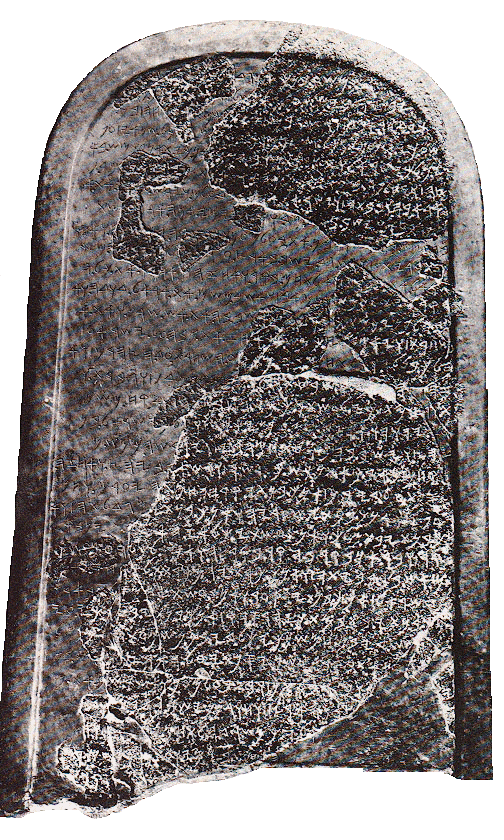Description: This stele is famously known as the "Moabite Stone" and the "Mesha Stelle." It was discovered in 1868 in Dibon Jordan. The text is the account of King Meshe and is the second non-Biblical reference to "King David" of the Bible. It is written in the Moabite language, another sister language to Hebrew. This stele is now located in the Louvre Museum in Paris France.
Era: Middle Semitic Script
Image Credit: Unknown
Date of Inscription: c. 830 BC
Location of Discovery: Dibon, Jordan
Date of Discovery: 1868
Current Location: ?
Language: Moabite
Writing Surface: Basalt Stone
Transliteration: TBD
Translation: 1 I am Mesha, son of Chemosh[-yatti], the king of Moab, the Dibonite.
2 My father (had) reigned over Moab for thirty years, and I reigned
3 after my father. And I made this high-place for Chemosh in Qarcho . . .
4 because he has delivered me from all kings, and because he has made me triumph over all my enemies. As for Omri
5 the king of Israel, and he humbled Moab for many years (days), for Chemosh was angry with his land.
6 And his son reigned in his place; and he also said, "I will oppress Moab!" In my days he said so.
7 But I ltriumphed over him and over his house, and Israel has perished; it has perished forever! And Omri took possession of the whole land of Medeba,
8 and he lived there in his days and half the days of his son (Ahab): forty years.
9 But Chemosh restored it in my days. And I built Baal Meon, and I built a water reservoir in it. And I built
10 Qiryaten. And the men of Gad lived in the land of Atarot from ancient times; and the king of Israel
11 built Atarot for himself, and I fought against the city and captured it. And I killed all the people of
12 the city as a sacrifice for Chemosh and for Moab. And I brought back the fire-hearth of his uncle from there; and I brought it
13 before the face of Chemosh in Qerioit, and I made the men of Sharon live there, as well as the men of Maharit.
Comments:



